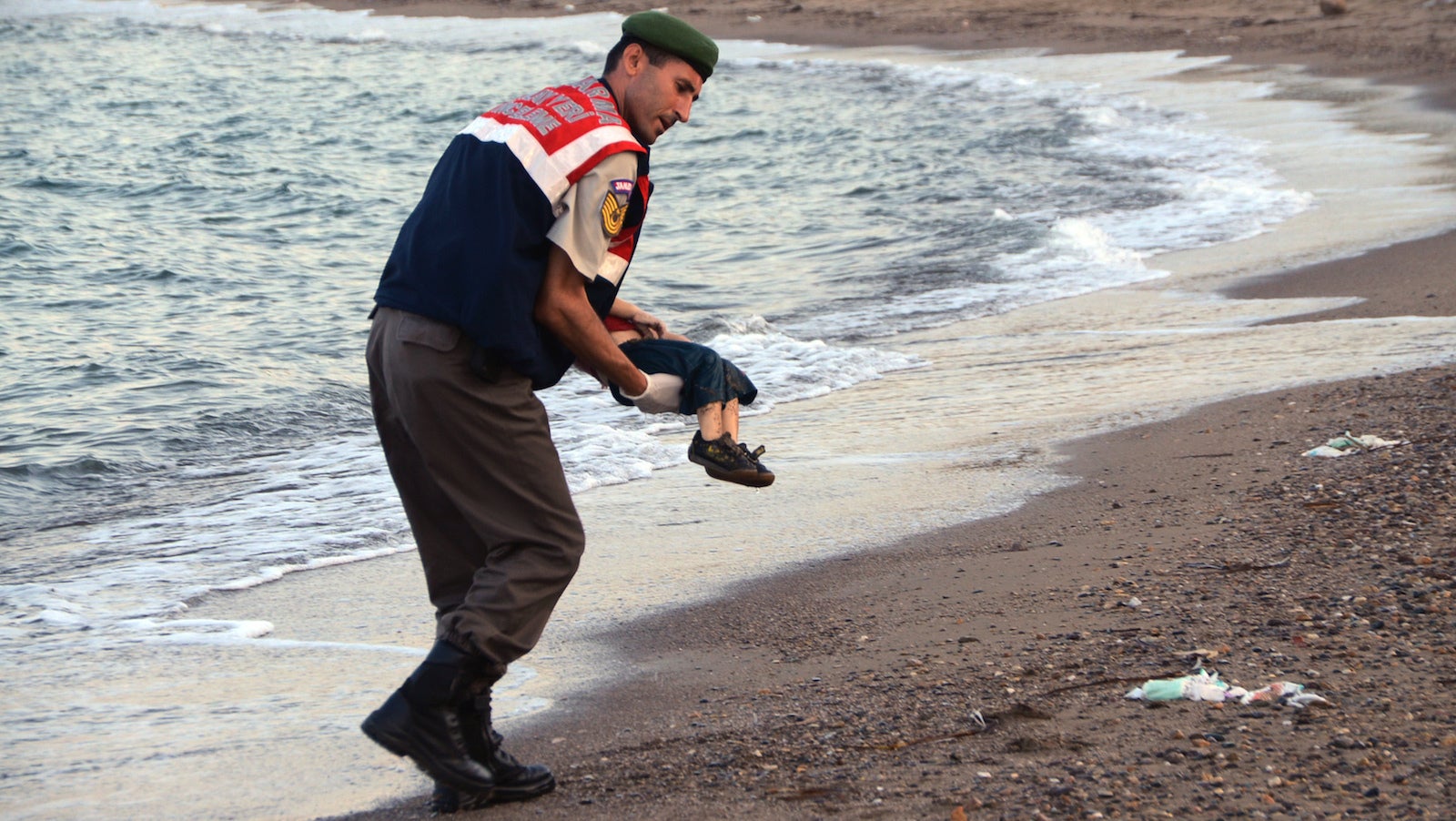8,500 more refugees have died or disappeared in the Mediterranean since this photo went viral
It’s been two years since a photo of a drowned Syrian boy—Alan Kurdi—shocked the world.


It’s been two years since a photo of a drowned Syrian boy—Alan Kurdi—shocked the world.
The image of Kurdi’s death brought the horrific reality of the refugee crisis to the forefront of the world’s news, and even led to some governments to soften their stance toward refugees. But the UN Refugee Agency (UNHCR) insists not enough is being done by the international community to do more to prevent refugee deaths. Since the photo first emerged, at least 8,500 more migrants have died or disappeared while attempting the journey to Europe across the Mediterranean.
An estimated 4,337 people are thought to have died while trying to reach European shores since September 2016, according to UNHCR. An additional 4,185 people died from September 2015 until the end of August 2016. Migrants tried to get to Europe through three main routes: Libya to Italy, Turkey to Greece like Alan Kurdi, or Morocco to Spain.
These deaths have occurred despite a sharp reduction in the number of migrants undertaking dangerous sea crossings to reach Europe. This decline was largely down to the controversial EU-Turkey deal, and stricter border policy (where a number of fences were erected to keep migrants out). The deal, which has been slammed by human-rights groups, sees Turkey receive up to €6 billion ($6.8 billion) in aid, visa-free travel to Europe for Turkish citizens, and renewed EU membership talks in return for Turkey agreeing to take back those who cross over to Greece.
Europe’s policies of putting fences and walls have largely diverted migrants from one border to another, according to human rights groups. In the last two years alone, Hungary, Austria, Slovenia, Macedonia, Bulgaria, and Norway all started construction to build fences and walls. Experts suggest that this has resulted in irregular migration moving from land borders to the far more dangerous sea crossings.
Of the more than 120,000 migrants that arrived in Europe by sea so far this year, 82% travelled to Italy from Libya. The journey, where the vast majority of deaths have occurred, has been described as one of the most dangerous route to Europe.
Many child migrants made this perilous sea journey to Europe alone, according to UNHCR. In the first seven months of 2017, 92% of the 13,700 children who arrived to Italy by sea did so unaccompanied.